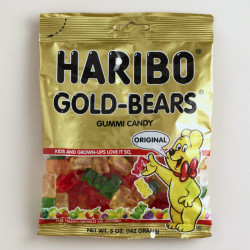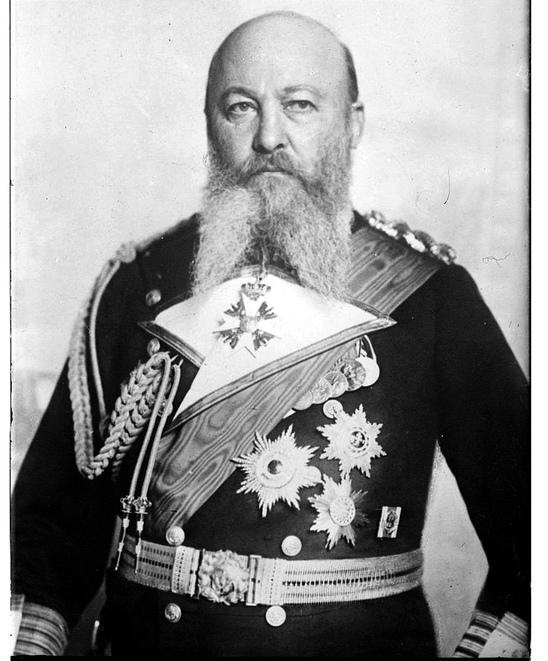Our writer Conlan is something of a gummy bear aficionado. So when his Secret Santa put a bag of Haribo Gold-Bears in his office stocking, Conlan was compelled to tell the rest of us the story of the First Gummy Bear. Here is that story, as told by Conlan.
Gummy bears, like Kraftwerk and Birkenstocks, could only be the product of cold, ruthless German efficiency.
It all started in 1920 when Hans Riegel started a confectionery company in Bonn, Germany. The company was named Haribo, and took its name from the beginning of the words Hairy Riddle Bork. In the early days, he mostly just sold pretzels (at the time, pretzels were the sweetest confections allowed under the Reinheitsgebonbon (the “German Candy Purity Law”). However, in 1922, Hans combined sugar with horse hooves. Hans contended the mixing was an accident as he mistook sugar for salt while making his trademark horse hoof stew; but years after he died, his lady friend Gertrud admitted that Hans had been intentionally flouting the Reinheitsgebonbon for some time, inventing new confections he hoped would one day bring him fame and revenge. Regardless of the circumstances, Hans tasted the sweet, gummy concoction when he sat down to eat his stew, and he immediately knew he’d hit on something big. He fashioned several more of these candies into little round pellets and rushed them to Steve, the Chancellor of Bavaria.

The Chancellor of Bavaria, probably (1919)
Hans pleaded with the chancellor (Steve) to try one his gummy candies in the hopes of abolishing the Reinheitsgebonbon and bringing sweetness to Germany at last. The chancellor did taste the little round gummies, and did think they tasted good. The chancellor explained he would like to abolish the Reinheitsgebonbon, because he felt the people of Germany could use a pick-me-up after the Great War, but he just couldn’t bring himself to strike down 435 years of proud Germanic tradition. He regretfully told Hans “nein,” and then Hans was sentenced to death for treason.
But Hans had one more trick up his sleeve (metaphorically).
“Vood you be persvaded,” Hans asked Steve, ”eef ein goomy candy vas ein DANCING BARR!?”
From the pocket of his lederhosen, Hans produced a tiny, red gummy in the shape of a dancing bear (which, at the time, was Germany’s national mascot).
The chancellor was dumbstruck. “Ist ein der goomy dancing barr?” he asked incredulously.
“Ja,” said Hans.
The chancellor snatched the First Gummy Bear from Hans’ grasp and popped it in his mouth.
“All ist vorgiben,” Steve said, between chews. “Go und maken die teeny goomy dancing barrs! Die Reinheitsgebonbon? More like DIE Reinheitsgebonbon!! Long leben die goomy barr!”
And so Hans went forth and began mass producing his gummy bears for the world. He looked to the native flora of Germany to inform the original five flavors which persist to this very day: raspberry from Brandenburg, strawberry from Hanover, lemon from Düsseldorf, orange from Dresden and of course pineapple from Stuttgart.
In time, gummy pretenders sprung up, in Germany and across the globe, but none could ever rival Haribo’s perfect balance of firmth and squishitude. That’s the reason why today, over 150 years later, Haribo is still the undisputed champion of gummy bears. And it all started — lo, those many decades ago — when a little German man, in a little German town, cooking a little pot of little horse hoof stew, decided to create the First Gummy Bear.

Hans in his stewboratory, maybe (1921)
It’s all true. Look it up.

